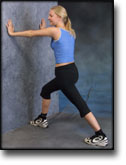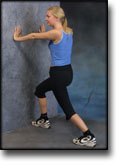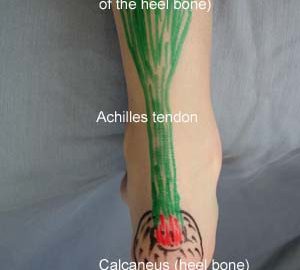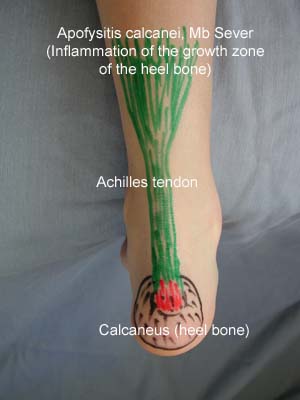|
Chronic Achilles tendon pain treated with eccentric calf-muscle training.
Fahlstrom M, Jonsson P, Lorentzon R, Alfredson H. Knee Surg Sports Traumatol Arthrosc. 2003 Sep;11(5):327-33.
Injuries involving the Achilles tendon and manifested as chronic tendon pain are common, especially among recreational athletes. In a pilot study on a small group of patients with chronic painful mid-portion Achilles tendinosis, eccentric calf-muscle training was shown to give good clinical results. The aim of this prospective study was to investigate if the previously achieved good clinical results could be reproduced in a larger group of patients, and also to investigate the effects of eccentric calf-muscle training in patients with chronic insertional Achilles tendon pain. Seventy-eight consecutive patients, having chronic painful Achilles tendinosis at the mid-portion (2-6 cm level) in a total of 101 tendons (55 unilateral and 23 bilateral), and thirty consecutive patients with chronic insertional Achilles tendon pain in 31 tendons (29 unilateral and one bilateral) were treated with eccentric calf-muscle training for 12 weeks. Most patients were recreational athletes. Evaluation of the amount of tendon pain during activity was recorded on a visual analogue scale (VAS), before and after treatment. In 90 of the 101 Achilles tendons (89%) with chronic painful mid-portion Achilles tendinosis, treatment was satisfactory and the patients were back on their pre-injury activity level after the 12-week training regimen. In these patients, the amount of pain during activity, registered on the VAS-scale (mean+/-SD), decreased significantly from 66.8+/-19.4 to 10.2+/-13.7. On the contrary, in only ten of the tendons (32%) with chronic insertional Achilles tendon pain was treatment satisfactory, with a significant decrease on the VAS-scale (mean+/-SD), from 68.3+/-7.0 to 13.3+/-13.2. Our conclusion is that treatment with eccentric calf-muscle training produced good clinical results in patients with chronic painful mid-portion Achilles tendinosis, but not in patients with chronic insertional Achilles tendon pain.
|


























